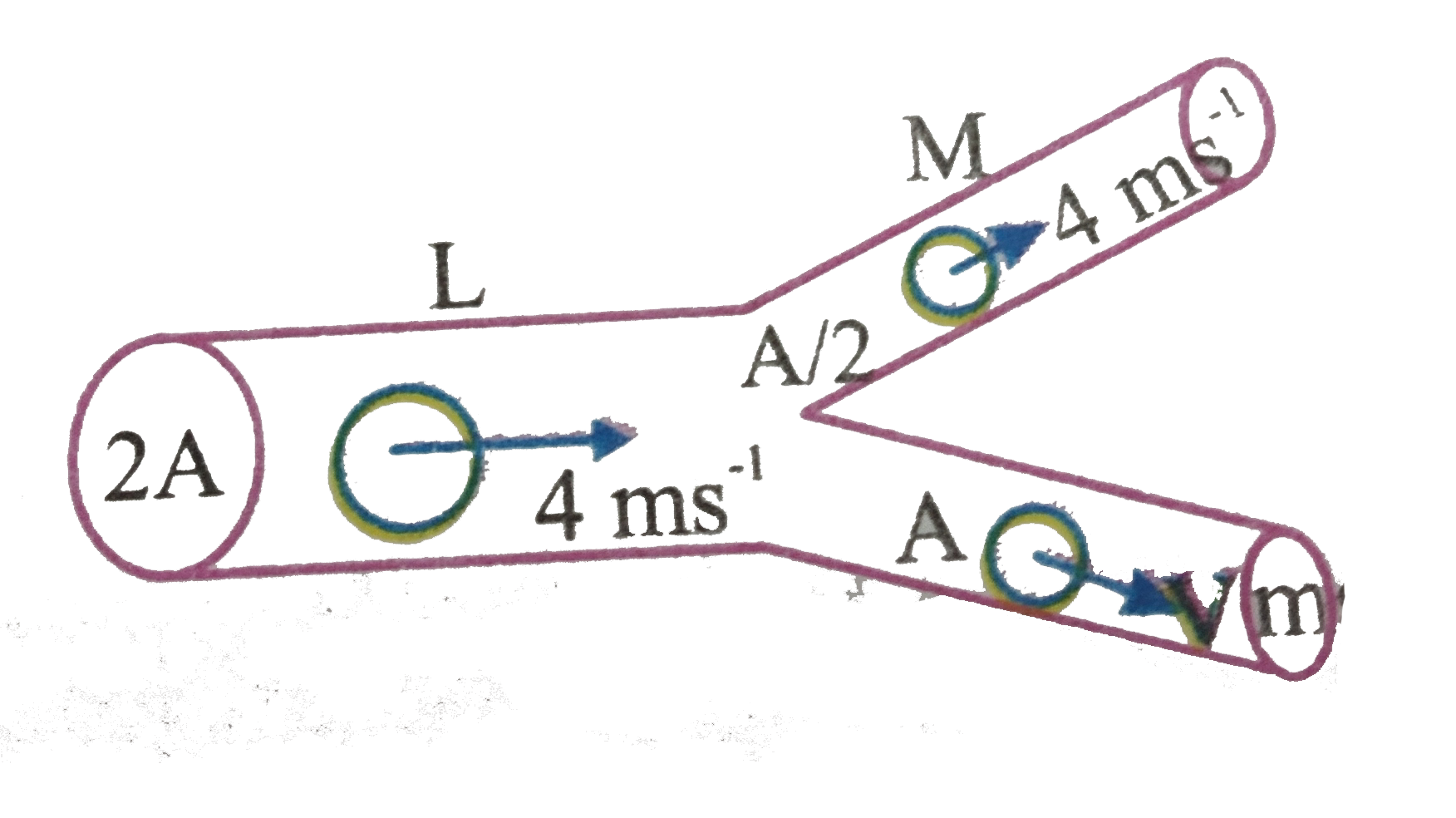The velocity of liquid flowing through a tube at certain distance from the axis of tube Solution in Tamil
Construction: It consists of two wider tubes A and A' (with cross sectional area A) connected by a narrow tube B (with cross sectional area a). A manometer in the form of U-tube is also attached between the wide and narrow tubes as shown in Figure. The manometer contains a liquid of density 'ρm'.

Theory: Let P1 be the pressure of the fluid at the wider region of the tube A. Let us assume that the fluid of density 'ρ' flows from the pipe with speed 'v1' and into the narrow region, its speed increases to 'v2'.
According to the Bernoulli's equation, this increases in speed is accompanied by a decrease in the fluid pressure P2 at the narrow region of the tube B. Hence, the pressure difference between the tubes A and B is noted by measuring the height difference (ΔP=P1−P2) between the surfaces of the manometer liquid.
From the equation of continuity, we can say that Av1=av2 which means that
v2=Aav1
Using Bernoulli's equation
P1+ρv212=P2+ρv222=P2+ρ12(Aav1)2
From the above equation, the pressure difference
ΔP=P1−P2=ρv212(A2−a2)a2
Thus, the speed of flow of fluid at the wide end of the tube A
v21=2(ΔP)a2ρ(a2−A2)
⇒v1=√2(ΔP)a2ρ(a2−A2)
Topper's Solved these Questions
- BOOK - PREMIERS PUBLISHERSCHAPTER - PROPERTIES OF MATTEREXERCISE - EVALUTION TEXTBOOK QUESTIONS & ANSWERS (NUMERICAL PROBLEMS )20videos
PROPERTIES OF MATTER
- BOOK - PREMIERS PUBLISHERSCHAPTER - PROPERTIES OF MATTEREXERCISE - OTHER IMPORTANT QUESTION & ANSWERS (MULTIPLE CHOICE QUESTIONS )143videos
PROPERTIES OF MATTER
- BOOK - PREMIERS PUBLISHERSCHAPTER - PROPERTIES OF MATTEREXERCISE - EVALUTION TEXTBOOK QUESTIONS & ANSWERS (SHORT ANSWER QUESTIONS)58videos
PROPERTIES OF MATTER
- BOOK - PREMIERS PUBLISHERSCHAPTER - OSCILLATIONS EXERCISE - OTHER IMPORTANT QUESTIONS & ANSWERS ( CONCEPTUAL QUESTIONS.)24videos
OSCILLATIONS
- BOOK - PREMIERS PUBLISHERSCHAPTER - QUESTION PAPER MARCH 2019EXERCISE - Part- IV23videos
QUESTION PAPER MARCH 2019
Similar Questions
A cappilary of diameter d mm is dipped in water such that the water rises to a height of 30 mm. If the radius of the capillary is made (23) of its previous value, then compute the height up to which water will rise in the new capillary ?
09:58View SolutionIn solids interatomic forces are:
01:54View SolutionDefine stress and strain.
02:56View SolutionCan a motion be periodic and not oscillatory ?
01:59View SolutionThe force F acting on a body moving in a circular path depends on mass of the body (m) velocity(v) and radius (r) of the circular path. Obtain the expression for the force by dimensional analysis method (k=1)
01:49View SolutionFLOW OF LIQUID IN A TUBE: CRITICAL VELOCITY
04:11View SolutionThe liquid is flowing steadily through a tube of varying diameter. How are the velocity of liquid flow (V) in any portion and the diameter (D) of the tube in that portion are related?
02:55View SolutionUnder a constant pressure head, the rate of streamlined volume flow of a liquid through a capillary tube is V. if the length of the capillary tube is double and diameter of the bore is halved, find the rate of flow of the liquid through the capillary tube.
04:33View SolutionThe rate of flow of a liquid through a capillary tube is
05:46View Solution
An incompressible liquid flows through a horizontal tube LMN as shown in the figure. Then the velocity V of the liquid throught he tube N is:01:53View SolutionAssuming that the critical velocity of flow of a liquid through a narrow tube depends on the radius of the tube, density of the liquid and viscosity of the liquid, find an expression for critical velocity.
02:28View SolutionThe velocity of liquid flowing through a tube at certain distance from the axis of tube
04:19View SolutionAn incompressible liquid flows through a uniform cross section tube with velocity 12 cm/s. the thickness of liquid layer is 0.8 cm then velocity of gradient of flow is
04:01View Solutionपिटोट नली द्वारा बहने वाले द्रव्य का वेग ज्ञात कीजिये।
02:56View SolutionCurrent flows through a straight, thin-walled tube of radius r. The magnetic field at a distance x from the axis of the tube has magnitude B.
03:03View SolutionThe velocities of cylindrical layers of liquid flowing through a tube , situated at distances 0.8cm and 0.82cm from the axis of the tube are 3cms^(-1)and2.5cms^(-1) respectively . Find the viscous force acting between these layers , if the length of the tube is 10 cm and the coefficient of viscosity of the liquid is 8 poise .
02:00View Solution

